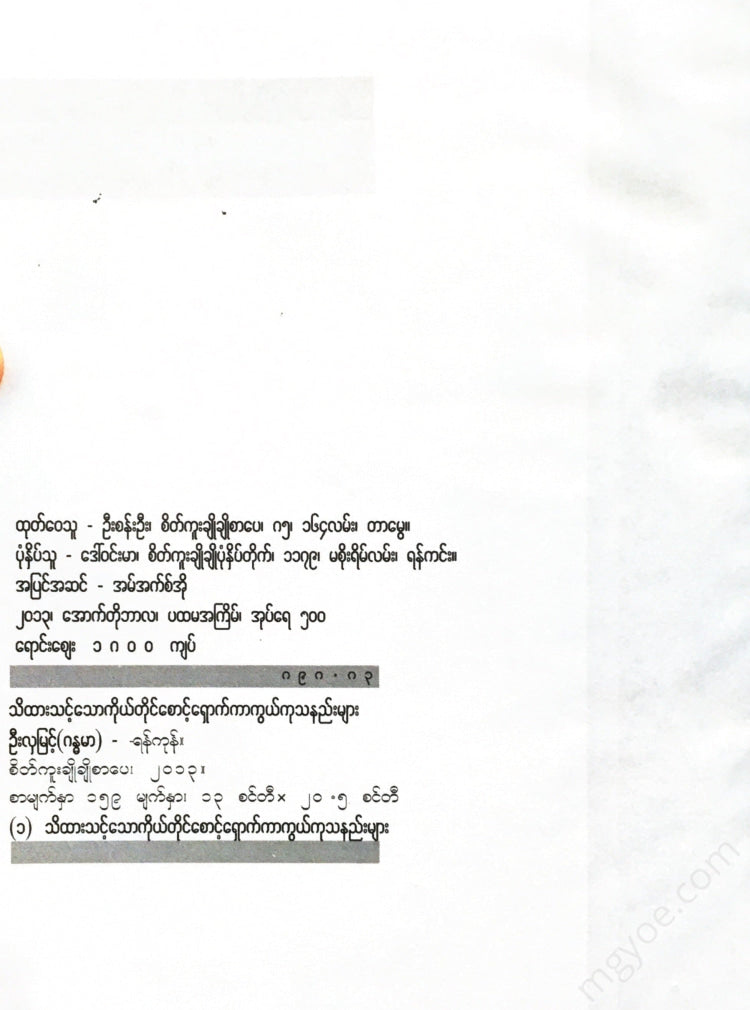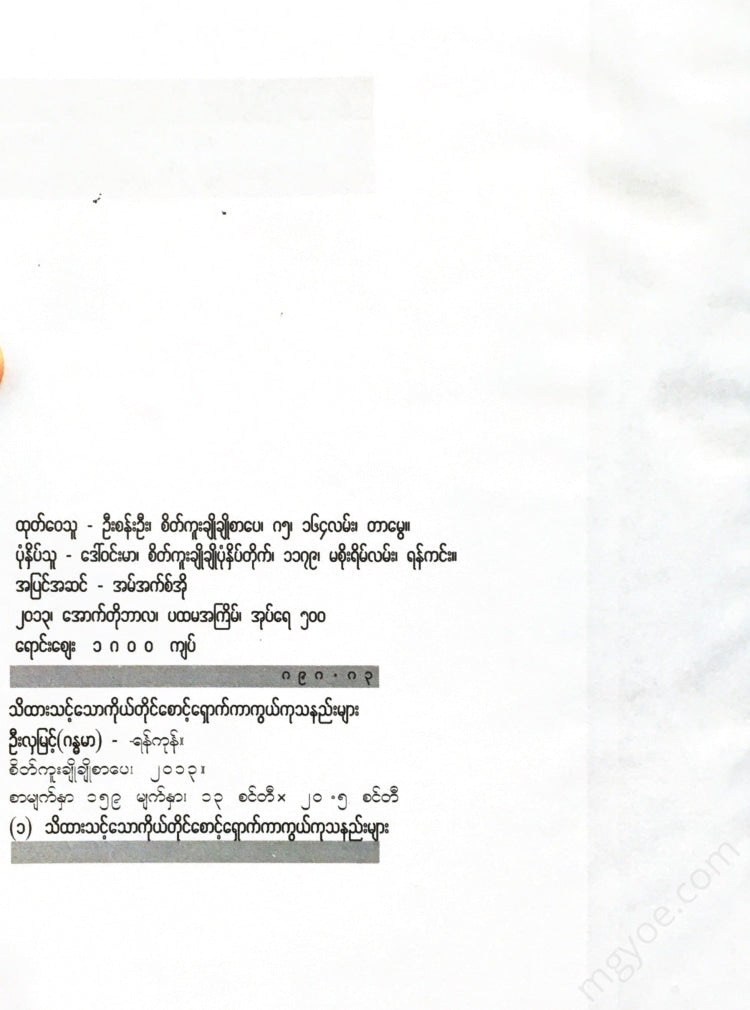စိတ်ကူးချိုချိုစာပေ
U Hla Myint (Gandhama) - Self-care tips you should know
U Hla Myint (Gandhama) - Self-care tips you should know
Couldn't load pickup availability
Make yourself a doctor again.
(1) Eat and live to have a fulfilling day.
There are four main things you should monitor every day to stay healthy. These are the amount of fruits and vegetables you eat (fresh farm produce), how much you walk, how active you are (physical activity), whether you get at least 15 minutes of laughter and joy (self-care), and whether you get enough beans, whole grains, and other high-fiber foods (fiber). If you can do these four things well, then you have a very healthy day. (The above statement will not be true if you spend the rest of the day drinking alcohol, smoking, and eating chocolate.)
(2) Check your entire body every 2 to 3 months.
With the help of your closest friend, do a skin check from head to toe. Look for new moles, discolorations, suspicious spots, and bumps. Be sure to check your scalp, between your toes, and between your fingers. If you find anything that worries you, see your doctor.
When examining a pet, use the “ABCD ” method to check for the following signs of potential danger.
- Asymmetry: Lack of uniformity in the shape of the two sides.
- Border irregularity: The edges of a mole are jagged and jagged.
- Colour: The ability to see different shades of colour, such as black, brown, or pink.
- Diameter: The diameter of the mole is greater than 6 mm.
(3) Monitor your sleep.
There are three good ways to tell if you are not getting enough sleep. First, do you need an alarm clock most mornings to wake you up? Second, are you sleepy enough in the afternoon to interfere with your work? Third, do you often fall asleep shortly after dinner? If your answer to any of these questions is “yes,” you need more sleep. If you are getting enough sleep (about 8 hours) and still have any of the problems mentioned above, talk to your doctor about your low energy.
(4) If you are over 50, measure your height annually.
This is especially important for women as a way to assess their posture and bone health. Shortening of height, as well as changes in bone density, provides insight into overall bone health. If you are concerned, see your doctor.
(5) Keep a mental record of the color of your urine.
This may seem strange, but it is a useful indicator of your health. Your urine should be clear and straw-colored. If it is dark and has a strong odor, you are probably not drinking enough fluids. If your urine is still dark even after you drink more fluids, see your doctor. If your urine is yellow, it could be a vitamin B deficiency (if you are taking a multivitamin).
(6) Check your heart rate after exercise.
A study in the Journal of the American Medical Association found that women with poor heart rate recovery (HRR) after exercise were twice as likely to have a heart attack over the next 10 years as women with normal HRR . The next time you exercise (for example, a 20-minute brisk walk or jog), take your pulse every 15 seconds immediately after you finish. Multiply that number by 4 (60 seconds divided by 1 minute) to get your heart rate. Sit for 2 minutes and take another measurement. Subtract the second number from the first number. If the result is less than 55, your HRR is higher than normal and you should talk to your doctor.
(7) If you have high blood pressure or diabetes, check your feet daily.
People with diabetes are more likely to injure their feet, so check your feet carefully for blisters, fungal infections, cracked skin, and any other injuries. Diabetics are more likely to have nerve damage in their extremities, such as the feet, so daily self-examinations can provide important clues about how well you are controlling your blood sugar levels and whether you have nerve damage.
(8) Get a cardiovascular checkup.
If you are over 40, you may want to ask your doctor for a full cardiovascular evaluation (to help prevent future heart attacks and strokes). If you have a family history of heart attacks and strokes, you should have this test even before you turn 40. Your cholesterol levels should be measured along with your smoking status, your blood sugar levels, your ECG readings, and your blood pressure. Cholesterol levels alone are not enough because they can miss other risk factors. Just having normal cholesterol levels does not necessarily mean that your overall cardiovascular health is normal. You should consult your doctor for advice along with the rest of the test results.
(9) Check your blood pressure every 6 months.
Check your blood pressure, either with a home blood pressure monitor or at a clinic. If your systolic blood pressure is over 140 (130 mmHg for people with diabetes) or your diastolic blood pressure is over 90 (80 mmHg for people with diabetes ) , wait a day and recheck. If your blood pressure is still high, see your doctor.
( 10) Check your wheel.
If you're losing hair, see your doctor and have your blood ferritin levels checked. This is an indicator of how much iron your body has stored. Some studies suggest that low iron levels are linked to unexplained hair loss. Thyroid disease is another common cause of hair loss.











